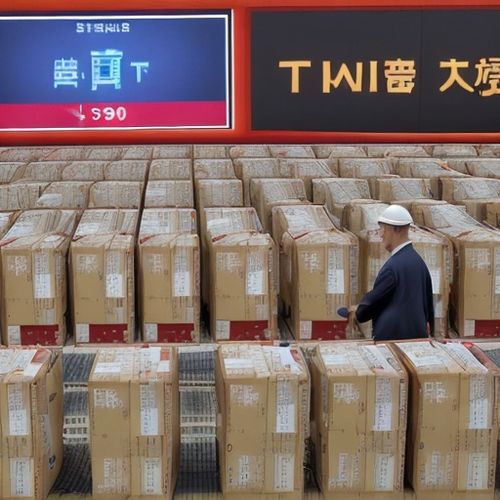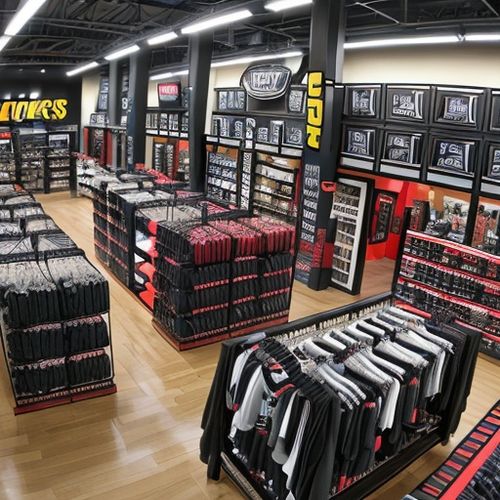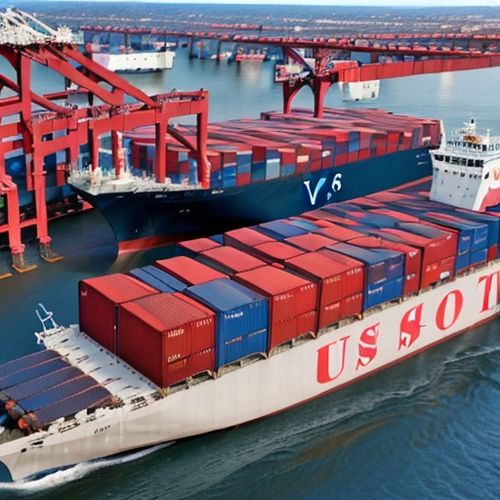In a bold move to fortify its position in the retail market, Dick’s Sporting Goods has announced a $2.4 billion acquisition of its rival, Foot Locker. This strategic deal, revealed on Thursday, is part of a larger trend among apparel companies seeking to safeguard their futures against the backdrop of volatile tariff policies. For Dick’s, a Pittsburgh-based sporting goods giant, the acquisition marks its first significant international expansion, positioning it to operate Foot Locker’s 2,400 stores across 22 countries.
The deal, however, is not without its risks. President Donald Trump’s tariffs on imported goods, particularly footwear, pose a significant threat to the industry. Foot Locker, which has been grappling with the decline of American shopping malls, has seen its fortunes wane in recent years. Despite efforts to relaunch its brand to attract younger, more diverse consumers, Foot Locker’s sales have continued to slide. In March, the company reported a 5.8% year-over-year drop in fourth-quarter sales, largely due to a downturn in Nike shoe sales, a critical segment given that Foot Locker is Nike’s largest retail partner.
The acquisition comes at a time when the footwear industry is particularly vulnerable. Roughly 99% of shoes and sneakers sold in the US are imported, primarily from China and Vietnam, according to the Footwear Distributors and Retailers of America. Trump’s tariffs have the potential to disrupt global supply chains and drive up the cost of footwear, putting additional pressure on retailers like Foot Locker and Dick’s.
Despite these challenges, Dick’s believes in the potential for growth. Ed Stack, executive chairman for Dick’s, expressed confidence in the deal, stating, “We believe there is meaningful opportunity for growth ahead. By applying our operational expertise to this iconic business, we see a clear path to further unlocking growth and enhancing Foot Locker’s position in the industry.” This optimism was not immediately shared by investors, as shares of Dick’s (DKS) dropped 13% in premarket trading following the announcement. Conversely, Foot Locker’s (FL) stock soared 80% in premarket trading, reflecting a 66% premium over its stock price, which had slumped more than 40% over the past year.
Neil Saunders, managing director of GlobalData, sees the deal as a strategic expansion for Dick’s. “While there is some overlap between the locations, the nature of the stores is different, and Foot Locker would give Dick’s access to a wider selection of malls and customers,” Saunders noted. This expanded retail footprint could provide Dick’s with a more diverse customer base and enhance its market presence. However, given Dick’s significant market share in the US sporting goods retail sector, the takeover could attract regulatory scrutiny.
The acquisition also highlights the broader trend of companies seeking to future-proof themselves against the uncertainties of global trade. With tariffs looming and the potential for further disruptions, companies are looking for ways to diversify their operations and mitigate risks. For Dick’s, acquiring Foot Locker offers a dual advantage: expanding its international presence and gaining access to a broader range of products and customer demographics.
However, the deal is not without its skeptics. Some analysts question whether the challenges facing Foot Locker, including declining mall traffic and shifting consumer preferences, can be overcome by Dick’s operational expertise. The success of the acquisition will depend on Dick’s ability to revitalize Foot Locker’s brand and adapt its business model to the changing retail landscape.
Moreover, the regulatory environment poses a significant challenge. The Trump administration’s unpredictable tariff policies have created a climate of uncertainty, making it difficult for companies to plan for the future. The potential for further tariffs on footwear imports could impact the profitability of both Dick’s and Foot Locker, complicating the integration process.
The acquisition of Foot Locker by Dick’s Sporting Goods represents a bold strategic move aimed at expanding market reach and enhancing operational capabilities. While the deal offers potential benefits, it also comes with significant risks, including regulatory scrutiny and the ongoing impact of tariffs on the footwear industry. The success of this merger will depend on Dick’s ability to navigate these challenges and leverage its operational strengths to revitalize Foot Locker’s brand. As the retail landscape continues to evolve, the outcome of this deal will be closely watched by investors and industry analysts alike.

By Laura Wilson/May 16, 2025

By Michael Brown/May 16, 2025

By Elizabeth Taylor/May 16, 2025

By Sophia Lewis/May 16, 2025

By Noah Bell/May 16, 2025

By Joshua Howard/May 16, 2025

By John Smith/May 16, 2025

By Laura Wilson/May 16, 2025

By Benjamin Evans/May 16, 2025

By Michael Brown/May 16, 2025

By Sarah Davis/May 16, 2025

By William Miller/May 16, 2025

By Sarah Davis/May 16, 2025

By Benjamin Evans/May 16, 2025

By Rebecca Stewart/May 16, 2025

By Natalie Campbell/May 16, 2025

By Lily Simpson/May 16, 2025

By Olivia Reed/May 16, 2025

By Olivia Reed/May 16, 2025

By Elizabeth Taylor/May 16, 2025